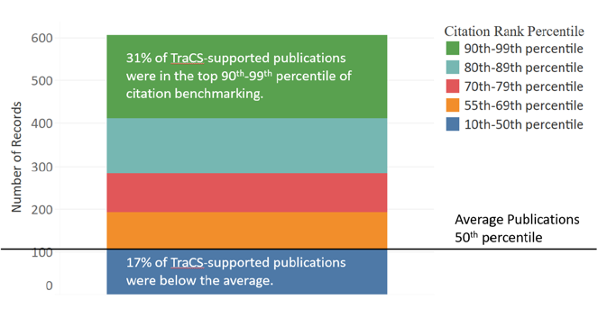Biblio….what?
Using the tools of bibliometrics, you can document the influence of your own publications, the work of those scholars you are associated with or the types of articles a particular journal publishes. Dr. Fei Yu, a health technology informatics librarian at the University of North Carolina is very excited about all that bibliometrics can reveal, and wants you to be too.
Mar 02, 2021
 Written by Abbe Adelson, Writer at Spark
Written by Abbe Adelson, Writer at Spark
I’ve done A LOT of literature reviews as both a graduate student and independent researcher. But I never examined the “research influence” of the scholars I cited. While I don’t think that conducting such research would have altered my selection of literature, being able to conduct a bibliometric review could be very useful.
Maybe you’re applying for a grant, seeking tenure, or looking for a journal to publish your work. Using the tools of bibliometrics, you can document the influence of your own publications, the work of those scholars you are associated with or the types of articles a particular journal publishes. Dr. Fei Yu, a health technology informatics librarian at the University of North Carolina is very excited about all that bibliometrics can reveal, and wants you to be too.

Image of Dr. Fei Yu
Dr. Fei Yu's session for Spark’s Productivity during Pandemic series,“Bibliometrics for Research Assessment and Quick Insight” really demonstrated the range of what can be discovered from basic citation data.
Here are just a couple of the things it can tell you:
- An accurate reflection of the influence of an author – those ubiquitous citation counts can be incredibly misleading
- Identify who has collaborated with whom. This becomes important for institutions that are attempting to increase inter-disciplinary research, expand their international reach, or spot the roles different researchers have amongst their peers (as a central connector, a boundary spanner, or a peripheral specialist)
- Explore the popularity of topics. You can conduct a landscape analysis by inputting the title and abstract into citation management software and it will provide an analysis how often a topic has been explored by a group of publications.
Here are a couple things that Yu and her co-authors in a recent paper (including Spark’s own Allison Van) discovered by looking at citation meta-data:

Figure from Fei, et al. (2020)
Needless to say, this really caught the eye of donors!
- Over the life of the centre, productive authors built more robust networks of co-authors and increased interdisciplinary.

Figure from Fei, et al. (2020) - Researchers in the sample collaborated with authors at over 800 unique organizations in 48 countries.
To learn more about the power of bibliometrics, you can watch Fei’s talk at McMaster - https://www.macvideo.ca/media/1_ta3bjhqf or read her recent paper:
Yu, Fei & Van, Allison & Patel, Tanha & Mani, Nandita & Carnegie, Andrea & Corbie-Smith, Giselle & Carey, Timothy & Buse, John & Dave, Gaurav. (2020). Bibliometrics approach to evaluating the research impact of CTSAs: A pilot study. Journal of Clinical and Translational Science. 4. 1-27. 10.1017/cts.2020.29.
If you are interested in exploring bibliometric analysis, Allison Van at Spark would be happy to work with you. She caught the bibliometric fever from Fei Yu and loves to share.
To speak to Allison Van at Spark, book a consultation with us or visit our website.